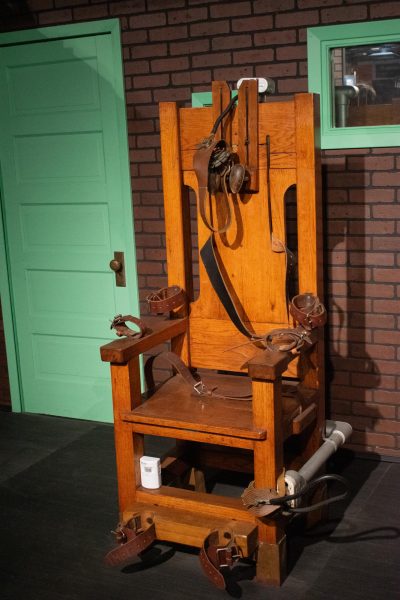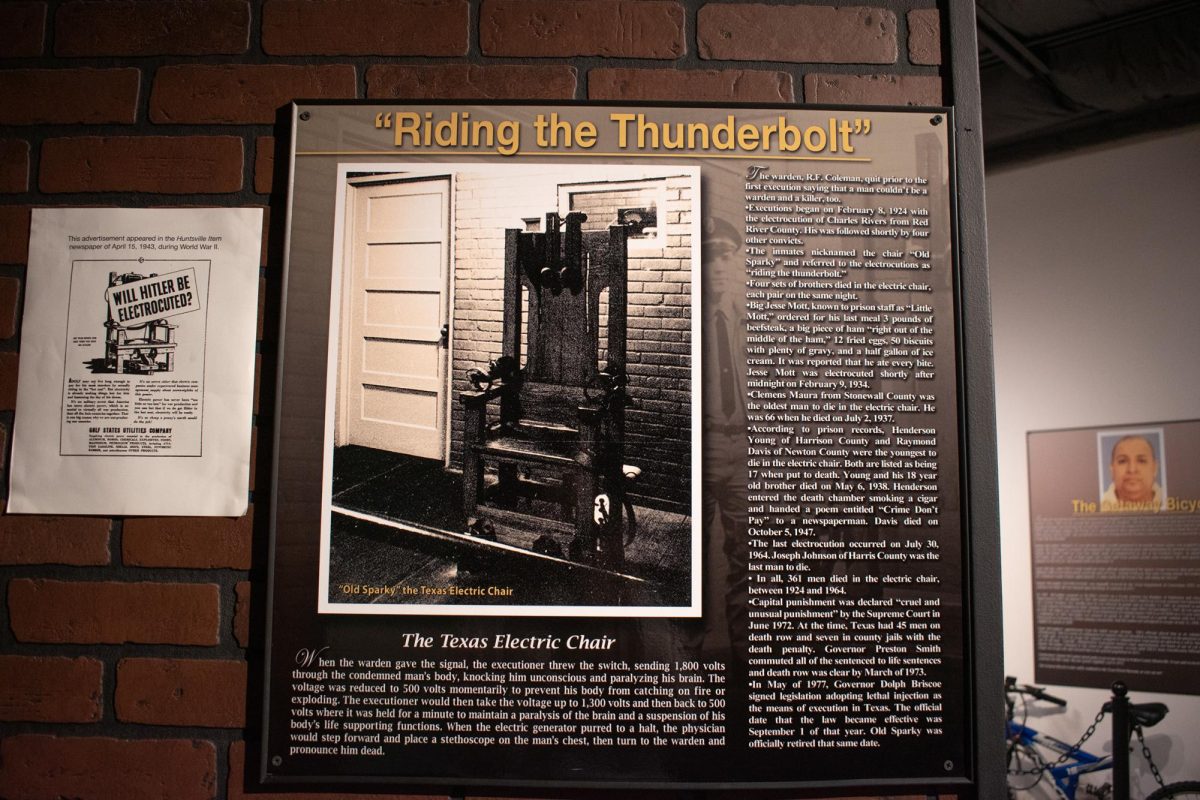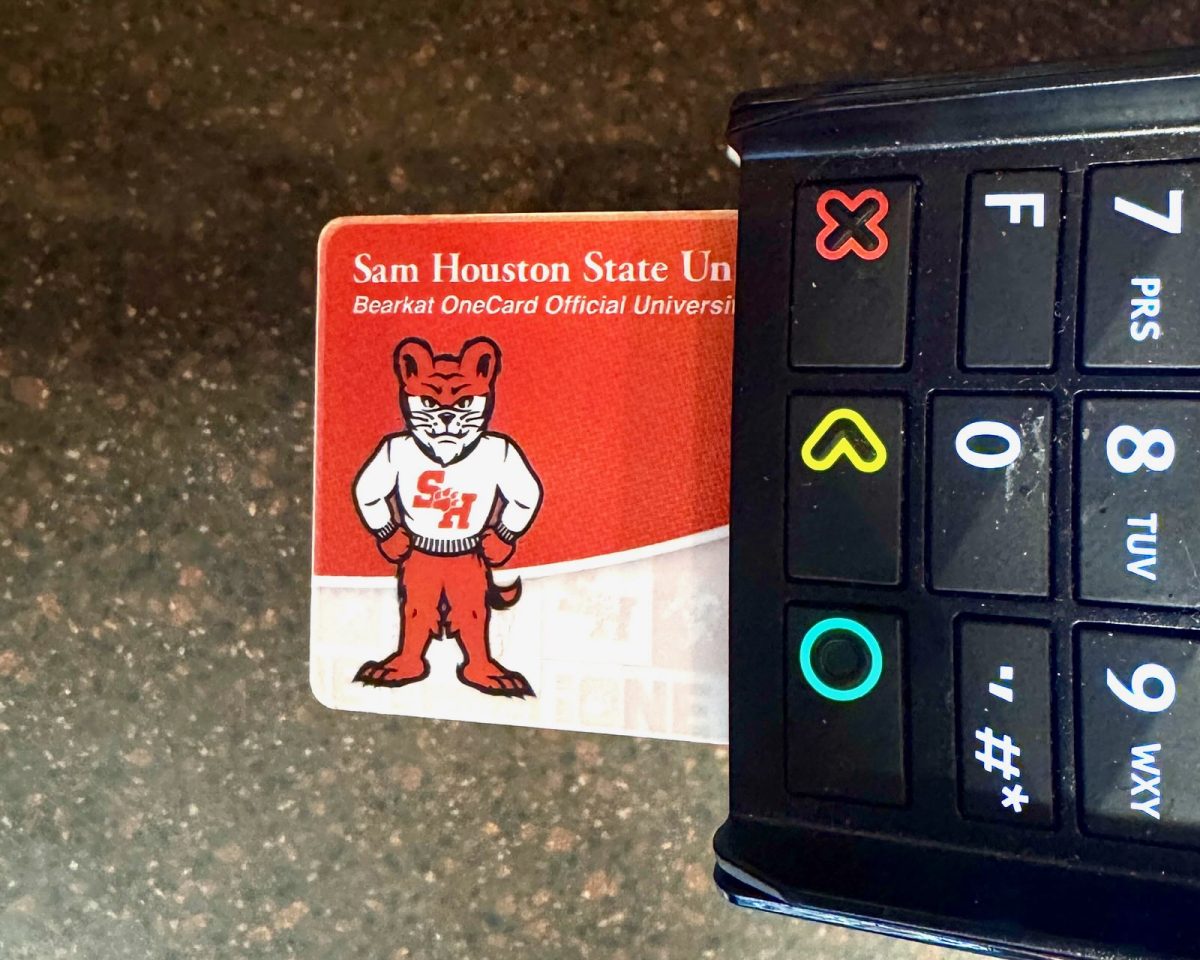This is the first installment of a semester-long series examining the death penalty and Texas prison system.
A machine that killed 361 convicted murderers from 1924 to 1965 was actually created by a convicted murderer himself.
That machine is known as the Texas electric chair.
The electric chair has been a point of interest in death row history. It now resides in the Texas Prison Museum, located at 491 State Highway 75 in north Huntsville. The museum is directed by David Stacks, who spent 30 years as a correctional officer at the Texas Department of Criminal Justice and retired as a Deputy Director of the prison system.
How did the electric chair end up in Texas? Stacks explained that before 1924, a death sentence was the responsibility of the county’s sheriff. Hangings were the most common way to execute, often bringing in large crowds.

There were 394 reported hanging executions from 1819-1923. In 104 years, there were only 33 more executions using this method, despite the electric chair only being in operation for 41 years.
“The legislature in Texas, I guess maybe the people in Texas in general, didn’t care for that,” Stacks said. “Thought [the electric chair] was a better way to do that, a more humane way to do it.”
Old Sparky is a nickname for the multiple electric chairs throughout the United States. New York was the first to adopt the electric chair in 1889. Thirty-five years later, Texas made its own “Old Sparky.”
Before the executions could begin, the state of Texas needed to build the chair. Who could better build the chair for killing convicted murderers than a murderer himself?
A man who was convicted of killing his wife was selected to build the chair.
Belton Harris was under the death penalty for eight months until a higher court reversed his sentence, and after a new trial, he received 15 years in prison. He accepted a job at a sawmill in Walker County while out of prison. Prison officials recognized his ability and hired him to build the electric chair.
According to the Texas Department of Criminal Justice, 361 Texans were killed by the electric chair. The method was declared “cruel and unusual punishment” by the U.S. Supreme Court on June 29, 1972. In 1977, lethal injection was adopted as the new method of execution in Texas.
The electric chair is a decorative piece now. It will never electrocute another death row inmate. Its space carved out in the center of the room serves as a slice of history filled with stories—many of which we will never know.








